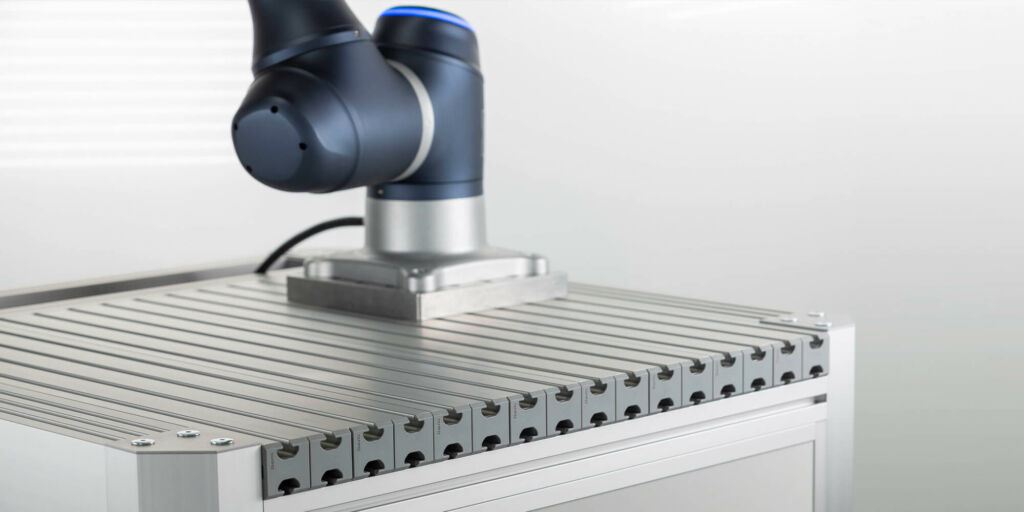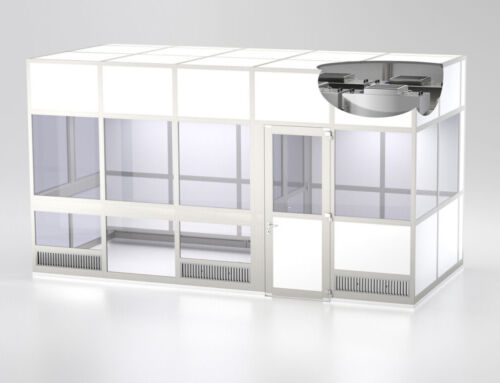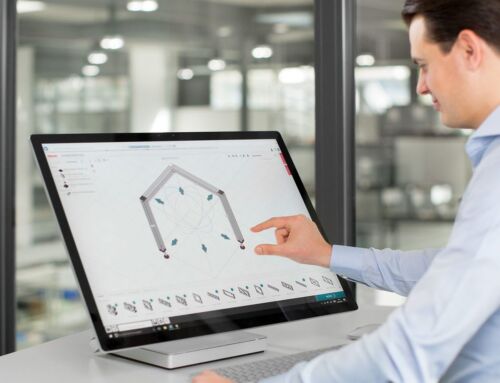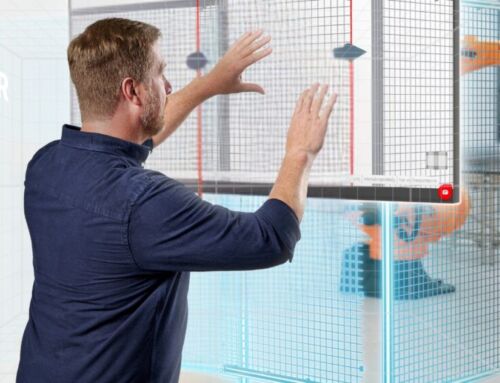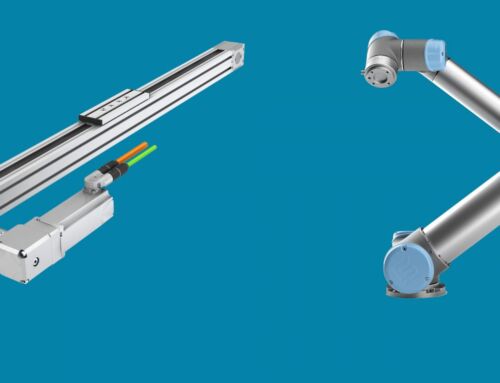As a recent health study has shown, people who sit less and move more lead longer, healthier lives.
Right now, are you sitting or standing? Obviously, many jobs involve being seated – there’s often no way around that. This means there’s little time left over for physical activity – and this can take a toll on your body. A report on the state of well-being in Germany published in 2023 clearly shows that we need to change our way of thinking. According to this study of living habits in Germany conducted by health insurance company Deutsche Krankenversicherung (DKV) and German Sport University Cologne, German people are spending more and more of their time sitting down. One of the report’s finding that is of particular concern is that the amount of time people spend seated each day is constantly rising. On working days, people now spend an average of 9.2 hours sitting down, which is half an hour more than in 2021. In 2015, the equivalent figure was just 7.5 hours per day.
Sitting for excessive periods of time has a serious impact on our health, increasing our risk of cardiovascular disease, cancer, and Type 2 Diabetes, as confirmed by the World Health Organization (WHO). What’s more, when we sit with incorrect posture, we place a strain on our body that quickly makes itself felt and can subsequently lead to persistent pain. If we can fit in just 15 minutes of physical activity each day during breaks and after work, we will experience a beneficial physical effect. What about the workplace itself? This is where ergonomics comes into play. Thanks to a combination of ergonomic workplace design and sitting ergonomically, you can prevent this particular type of physical strain. What’s more, this also boosts productivity. These principles apply to more than office work – in fact, when it comes to manual assembly, they are more important than ever. Our item Work Bench System is suitable for both assembly and office work. We can also help by providing you with essential information and tips for your everyday work.
Ergonomics Study for Industry Use
This study shows which ergonomic measures are already being used in manual production. Find out more and see how you compare. How much progress has your company made?
Sitting correctly and working ergonomically: how to ensure you’re in the right position
In terms of occupational health, sitting ergonomically is an absolute must. Sitting in the same position for hours on end quickly leads to strain and tension. If nothing is done to combat this, chronic pain may develop as a result; however, employees able to work in a healthy, strain-free manner are more accurate and more productive. Ergonomics is key, especially when it comes to manual assembly, where works have to repeat the same movements over and over. An ergonomic chair from the item Work Bench System not only supports a healthy posture, but also encourages dynamic sitting. In other words, the right type of chair lets employees change their position and posture frequently, so that one side of the body isn’t overworked and specific muscle groups aren’t put under excessive strain. This is where we see the interplay of environmental and behavioral ergonomics.
Environmental ergonomics is all about the ergonomic design of our working environment. This also includes use of a suitable chair.
Behavioral ergonomics is about acting in line with ergonomic principles. For example, using an ergonomic chair is considered a ‘good start;’ however, you will only benefit from the chair’s full potential if you also sit ergonomically and dynamically.
If you need an ergonomic chair, there are various features you should look for. A seat that moves synchronously and can be tiled forwards slightly and rotated is particularly important. The backrest should also be adjustable so that you can alter the tension control for your lower back. These adjustment options mean that all employees can find their ideal sitting position and adopt a healthy posture. This specifically protects the back. The backrest and other components can be adjusted at any time. Ideally, the chair should be designed in such a way that you can use any of the adjustment options intuitively. Chairs for industrial use should have braking castors and counter chairs with elevated seats must have castors that lock in position when under load. This technology reduces the risk of occupational accidents without compromising on mobility. Other crucial features of a high-quality industrial chair include easy-to-clean, durable upholstery that is not damaged by lubricants or cleaning agents.
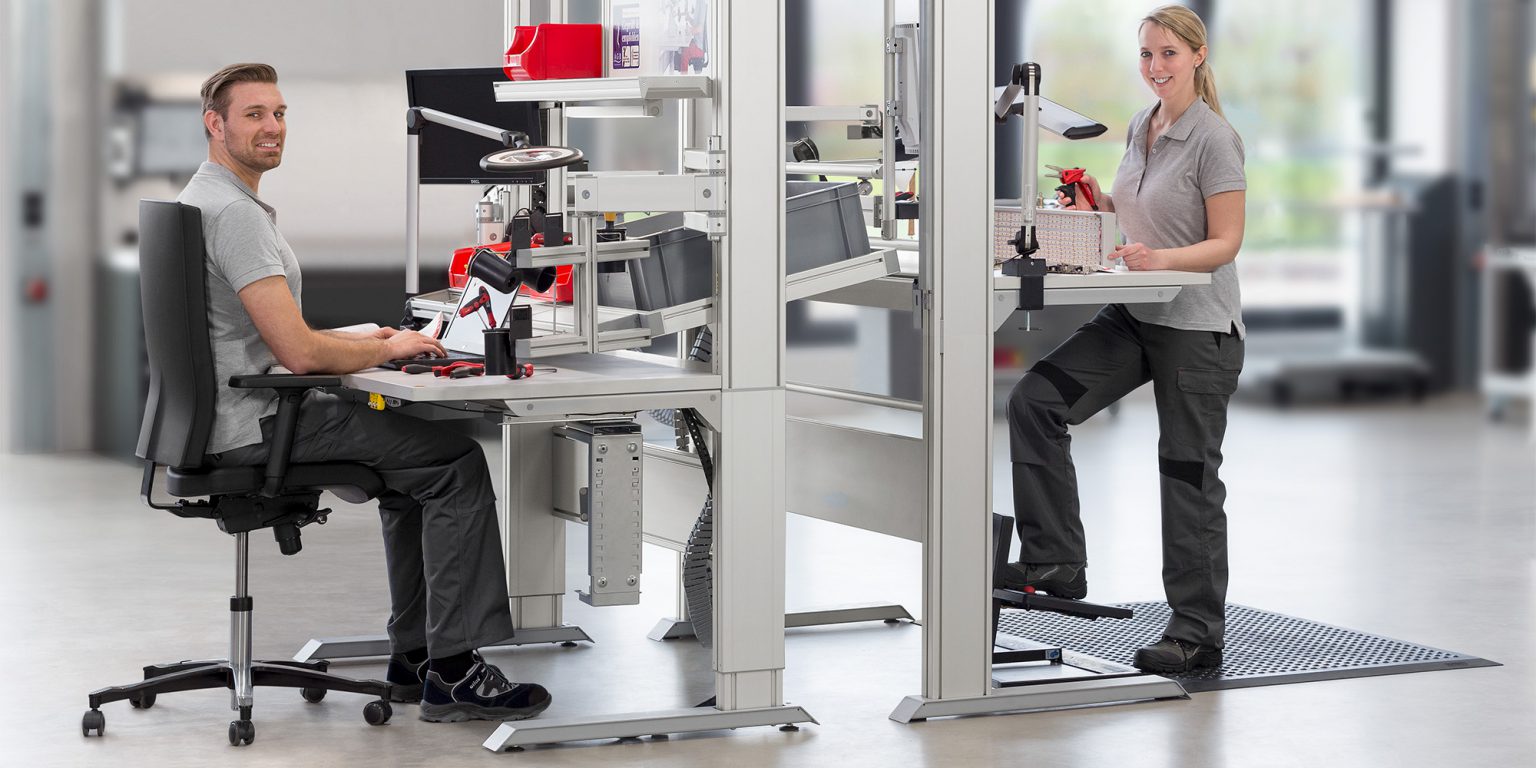
From using a suitable chair and sitting dynamically to switching between sitting and standing – sitting ergonomically covers a whole range of aspects.
Posture isn’t all that matters: switching between sitting and standing
By switching regularly between sitting and standing, we can ensure the entire upper body moves more. This not only improves circulation but boosts concentration, too. The item Work Bench System is ideal for this, because all components are designed to ensure you can configure flexible and ergonomic work benches for manual production. This is currently the only industrial work bench system to have been given the seal of approval from the Campaign for Healthy Backs (AGR). Our height-adjustable work benches make it easy for you to switch between sitting and standing. This plays a key role in helping you avoid strain and chronic problems. In particular, electric height adjustment makes it easier for you to switch between different working heights. What’s more, our electrically height-adjustable work benches come with an intelligent memory, meaning that staff can save their personal settings and recall them with ease. All in all, these work benches are ideal for ensuring a smooth transition from one shift to the next.
As you have seen, sitting down exposes people to a wide range of health risks. It’s not only employee health that’s jeopardized by poor posture and awkward sitting positions – a company’s productivity can also suffer. When you take account of the aspects outlined above, the result is a true win-win situation. Sitting correctly has a direct impact on our sense of well-being and, consequently, on our performance. Our ergonomics infographic shows you how to sit ergonomically in the correct position. We even give you the correct angles. For example, the angle between your upper and lower legs should be at least 90° to prevent circulatory problems. By following our tips and ensuring regular movement, you will improve your health step by step.

A simple explanation of how to sit correctly, complete with angles. This infographic sets out all the important factors for sitting ergonomically. Make the relevant adjustments to your chair and backrest, and follow the behavioral recommendations given. You will then be protected against poor posture – from head to toe.
More information about ergonomic work benches
Sitting ergonomically is an important element of ergonomics in industry; however, alongside your sitting position and choice of chair, there are many more aspects you should keep in mind. These include material supply, tool stowage, and lighting, to name a few. You will find information and practical tips about these topics and more on the item Blog:
- An overview of work bench design in production
- Ergonomics and intralogistics: a strong team
- The work bench handling area – ergonomics in layman’s terms
- Industry 4.0 in production: the ergonomic aspect
- Ergonomics: its significance, goals, and history
- Measures to combat stress in the workplace
- Plan industrial work benches efficiently in the Work Bench Configurator
Interested in ergonomic work benches in production? We have something to suit your interests. Simply subscribe to the item Blog by completing the box at the top right.


